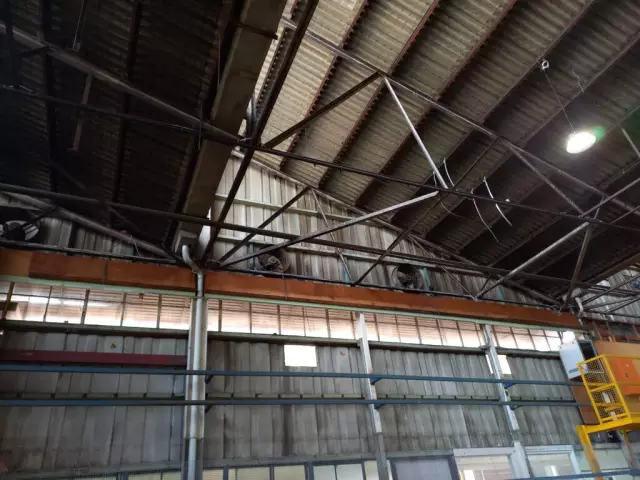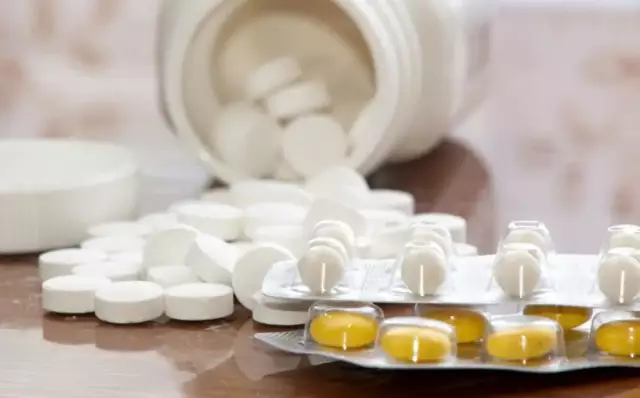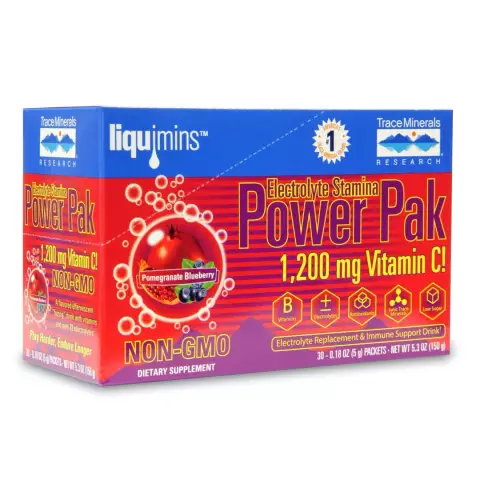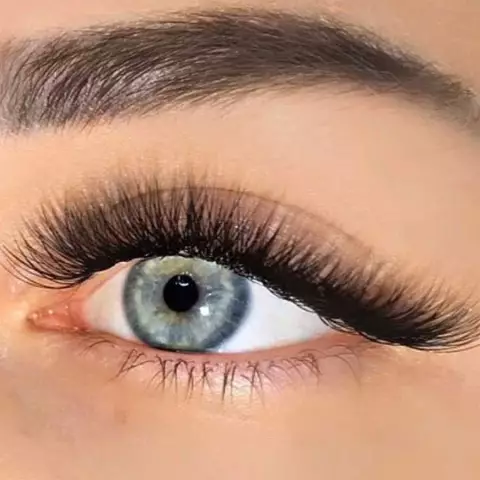- Author Rachel Wainwright [email protected].
- Public 2023-12-15 07:39.
- Last modified 2025-11-02 20:14.
10 building materials hazardous to health
The acquisition of materials for construction and repair is a difficult and responsible business. When buying, most Russians primarily pay attention to the appearance, manufacturability and cost of materials, and not to their safety. This approach is fraught with the most unpleasant consequences. Some modern building materials are capable of negatively affecting the human body, and many sellers, concerned solely with increasing income, prefer not to bring to the attention of buyers full information about all the qualities of the goods sold.
We will try to fill this gap and acquaint our readers with a list of building materials that are unsafe for health.

Source: depositphotos.com
Slate
In the recent past, it was slate that was one of the most inexpensive and widespread roofing materials. The harm that he can inflict on human health is primarily due to the fact that slate sheets are made from compressed asbestos fibers, which eventually breaks down into tiny pieces. These particles are so small and light that they are in the air in the form of the finest suspension and, if inhaled, can enter the respiratory tract, settling there. The rate of destruction of asbestos increases with heating. This means that the roof made of slate sheets literally poisons the residents of the house on hot summer days.
Asbestos is one of the most potent carcinogens. Long-term inhalation of its particles is fraught with the development of not only inflammatory processes in the respiratory system, but also malignant tumors.
If you decide to use slate in your home construction, try to make sure that it is not exposed to high temperatures and weather changes. The easiest way is to paint the surface of the sheets, which will to some extent reduce the likelihood of harmful effects of the material on health.

Source: depositphotos.com
Concrete
Concrete is used as the main material for pouring foundations, erecting load-bearing walls and strong partitions. Individual building elements (blocks and slabs), as well as massive structures are made of it. The material is technologically advanced, durable and inexpensive. Unfortunately, it is practically impervious to air, and living in a house built from concrete elements is quite harmful. In addition, slabs and blocks are reinforced with metal frames, which act as a kind of trap for electromagnetic waves. It has been established that residents of houses built of reinforced concrete often suffer from increased fatigue and have problems with sleep. Experts associate such ailments with exposure to electromagnetic radiation.
When building monolithic structures, the method of pouring the sealant with a concrete mixture is used. Small crushed stone is used as a basis, which is obtained from solid rocks (for example, granite). At the same time, not too conscientious construction companies do not bother to check the safety of the seal, in particular its radioactivity. As a result, residents often move into apartments, the walls of which have created an increased radioactive background for many decades.

Source: depositphotos.com
Drywall
Drywall is used for interior decoration of residential premises: leveling walls and floors, creating complex shapes of ceilings and a variety of lightweight partitions. But few people suspect that this material can pose a health hazard.
Only high-quality drywall, which includes cleaned gypsum, can be considered harmless. It does not break down in air and does not adversely affect the respiratory tract. The problem is that inexperienced buyers often buy cheaper technical drywall that is not intended for home decoration. Such savings are unacceptable: low-quality material is not only less durable, but also harmful to health.

Source: depositphotos.com
Expanded polystyrene
In construction, two modifications of expanded polystyrene are used: pressed (foam) and extruded. Both are used as insulation. In addition, some types of wall and ceiling finishing panels are made from foam.
Expanded polystyrene releases chemicals such as styrene, phenol and formaldehyde into the air. They not only irritate the mucous membrane of the respiratory tract, but also accumulate in the body, gradually poisoning it. Therefore, experts do not recommend using expanded polystyrene for interior decoration of housing. Prolonged stay in a room lined with foam plates has a bad effect on the condition of the liver and cardiovascular system. There is evidence that the accumulation of decomposition products of expanded polystyrene in the body of a pregnant woman can lead to fetal malformations.

Source: depositphotos.com
Mineral wool
In modern construction, mineral wool is widely used for insulation and sound insulation. The material can emit phenol and formaldehyde, which are toxic to humans. The likelihood of harm to health is high, since mineral wool easily breaks down into microparticles that enter the body through the respiratory system.
To avoid harmful effects, layers of mineral wool should be used exclusively as insulation, which should be placed between layers of other building materials. Drilling is not recommended for walls and partitions built with mineral wool.

Source: depositphotos.com
Dry plaster mixes
Dry mixtures for the preparation of plaster, putty pastes, adhesives and other finishing materials should not contain any components harmful to health. The danger of materials of this kind stems from the fact that they are very easy and profitable to counterfeit. According to some reports, the share of counterfeit dry mixes sold on the domestic market is about 60%. During test purchases, powders sold in counterfeit "branded" packages include poorly cleaned chalk, chemicals that are toxic to humans, and even components with a distinct radioactive background.

Source: depositphotos.com
PVC products
Their polyvinyl chloride (PVC) is used to make materials for stretch ceilings, wall panels (siding), pipes, and a variety of interior decoration elements (baseboards, moldings, installation accessories for electrical wiring, etc.). The so-called plastic windows are also widespread, in the manufacture of which PVC is also used. Products manufactured by European firms that maintain high quality standards are practically safe. The trouble is that the domestic market is overflowing with their substandard counterparts and fakes. Such materials can release dioxin, a potent carcinogen, and toxic phenol.

Source: depositphotos.com
Linoleum
Linoleum is intended for finishing floors. It can be natural and polymer. The first is made on the basis of jute fabric or wood chips using natural oils and resins. It is harmless, but not cheap and rather difficult to install. In the production of polymer linoleum, synthetic resins are used, which can release benzene into the air, which depress the respiratory system, and phthalates, which have a detrimental effect on the reproductive system. The most dangerous is considered to be a material made on the basis of polyvinyl chloride, especially in those cases when floors are finished with it, which are constantly exposed to moisture or high temperatures.

Source: depositphotos.com
Wallpaper
Vinyl wallpaper does not emit harmful substances, but absolutely does not allow air to pass through. Colonies of pathogenic fungi can grow under them. Such material cannot be pasted over bedrooms, children's rooms, as well as rooms with high humidity. Low-quality washable wallpapers begin to degrade over time, releasing benzene and styrene.
The best option is pasting the walls with paper wallpaper. They are not as technologically advanced as linkrust or vinyl, but they are not harmful to health, and they are cheaper. Wallpaper made from natural plant materials (jute, bamboo, etc.) is environmentally friendly, but very expensive.

Source: depositphotos.com
Paints and varnishes
The safest are water-based paints. They do not contain toxic solvents and are suitable for interior decoration.
Most oil paints and varnishes are made using toluene and xylene. These substances in high concentrations lead to the development of diseases of the respiratory system and blood, affect the mucous membranes and skin. Some types of paints and varnishes are made on the basis of polyvinyl chloride, which can release dioxin into the air within six months after painting.

Source: depositphotos.com
Unfortunately, in Russia there is practically no system of compulsory certification of construction and finishing products. The domestic market is oversaturated with materials that pose a real health hazard. To somehow secure yourself, you need:
- purchase materials made by well-known European or American manufacturers;
- choose construction products in large specialized stores;
- carefully study the composition of the purchased materials;
- exactly follow the manufacturer's recommendations for the use of materials for construction and repair;
- do not save on the quality of additional materials (adhesives, mastics, finishing mixtures, etc.).
Apartment renovation (especially the construction of new housing) is carried out quite rarely. This process requires careful planning, including financial planning. It is important to approach the choice of building materials with particular seriousness and take into account all their properties. Only in this case your house will become not only beautiful and comfortable, but also safe.
YouTube video related to the article:

Maria Kulkes Medical journalist About the author
Education: First Moscow State Medical University named after I. M. Sechenov, specialty "General Medicine".
Found a mistake in the text? Select it and press Ctrl + Enter.






